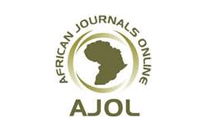Mansoura Veterinary Medical Journal
Document Type
Original Article
Subject Areas
Bacteriology
Keywords
Listeria monocytogenes, hylA gene, iap gene, Virulence, Antibiotic Susceptibility, sheep
Abstract
Objective: This study was undertaken to determine the prevalence, virulence, and antibiotics susceptibility of Listeria monocytogenes isolated from hindbrain, spinal cord, milk, and intestinal content collected from sheep in the Dakahlia Governorate, Egypt.Design: Observational study.Samples: We analyzed 472 samples, including 72 hindbrain/spinal cord samples from emergency-slaughtered sheep, 300 raw-milk samples from apparently healthy sheep, and 100 intestinal content samples from slaughtered sheep at three abattoirs.Procedures: Isolation and identification of L. monocytogenes were performed using conventional techniques. The biochemically identified isolates were confirmed by 16SrRNA gene sequencing and examined for virulence-associated genes (hlyA and iap) as well as for antimicrobial susceptibility.Results: In total, 16 (3.39%) out of 472 sheep samples [5.56% (4/72) in hindbrain/spinal cord, 4% (12/300) in milk, and 0% (0/100) in intestinal content samples] were found to be positive for L. monocytogenes. All the confirmed isolates were positive for the hlyA gene (100%); meanwhile, none of them exhibited the iap gene.Antibiotic susceptibility testing showed high resistance rates to amoxicillin, cefotaxime, erythromycin (50% each), and vancomycin (37.5%). Sulfamethoxazole–trimethoprim and tetracycline resistance rates were 25% and 12.5%, respectively. On the contrary, all isolates were susceptible to amikacin, ciprofloxacin, and norfloxacin. Interestingly, 37.5% (6/16) of L. monocytogenes isolates exhibited multidrug resistance (MDR). The multiple antibiotic resistances (MAR) index of isolates ranged from 0.1 to 0.6.Conclusion and clinical relevance: Our data highlights the importance of awareness of virulent strains of MDR L. monocytogenes of sheep samples and potentially samples from other domestic animals in Egypt.
How to Cite This Article
Elbar, Shaimaa; Elkenany, Rasha; Elhadidy, Mohamed; and Younis, Gamal
(2020)
"Prevalence, virulence and antibiotic susceptibility of Listeria monocytogenes isolated from sheep,"
Mansoura Veterinary Medical Journal: Vol. 21:
Iss.
2, Article 5.
DOI: https://doi.org/10.21608/mvmj.2020.21.2.207
Receive Date
2020-02-12
Accept Date
2020-04-28
Publication Date
6-25-2020






